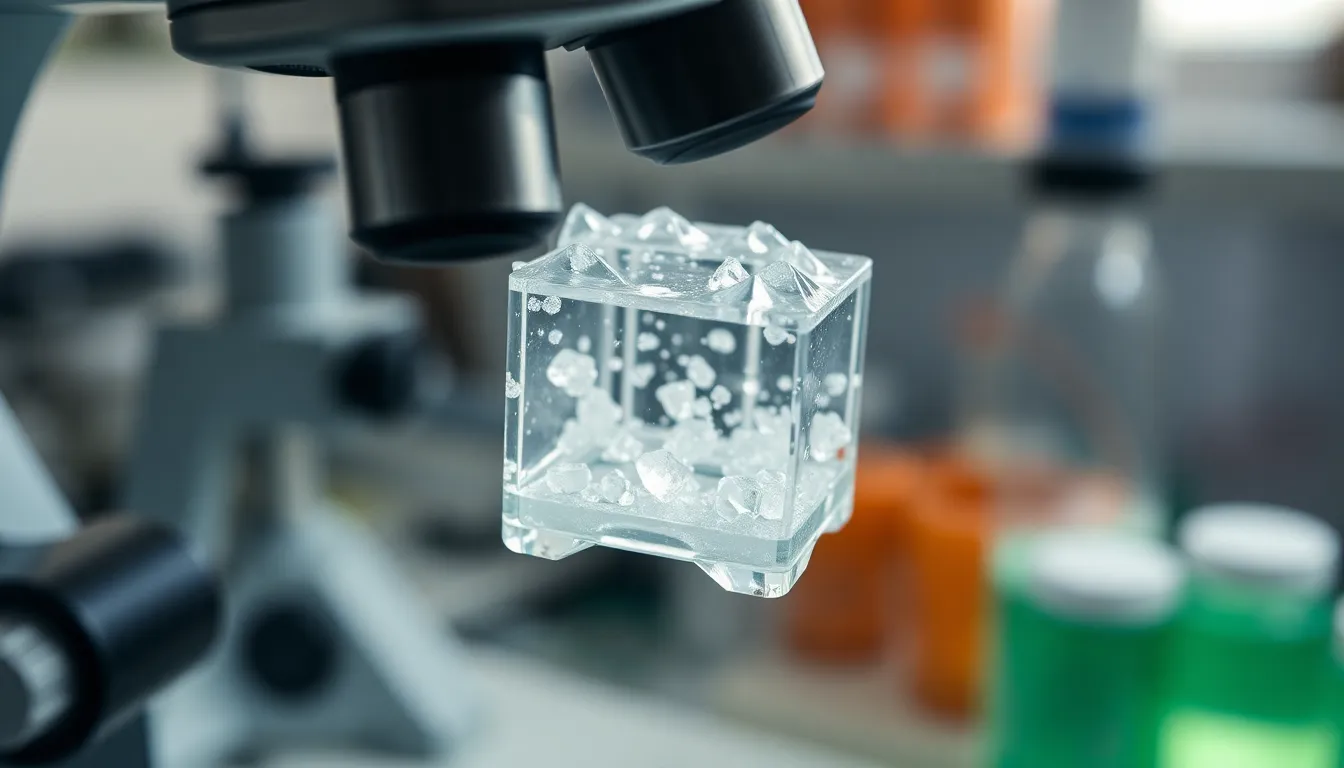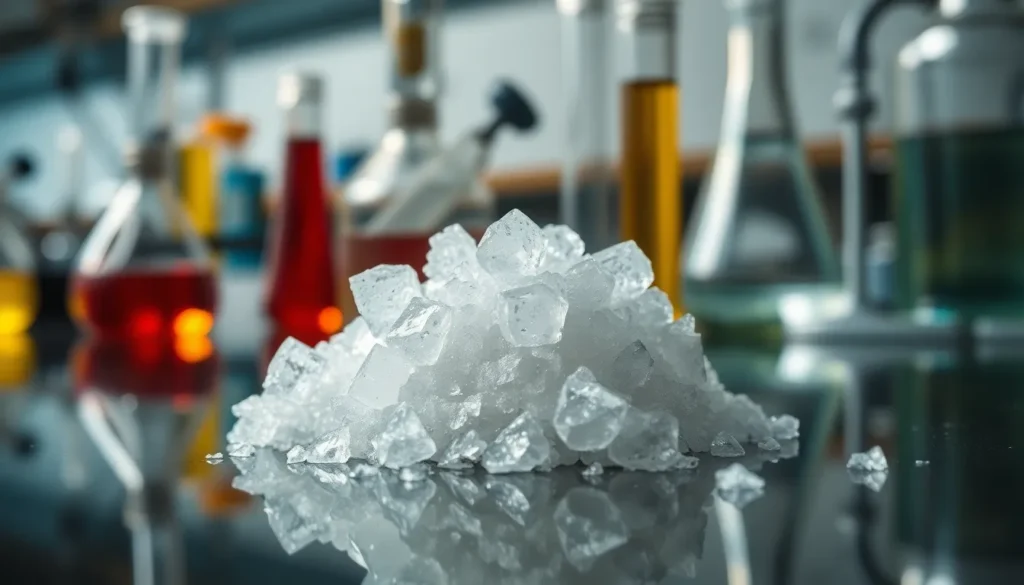When it comes to chemistry, the world of ionic bonds can feel like a high-stakes game of matchmaker. Picture this: metals and nonmetals are like that quirky couple everyone talks about. They don’t just coexist; they form a union that sparks fireworks—literally! Ionic bonds are the chemistry equivalent of a dramatic romance, where one partner (the metal) gives up an electron, while the other (the nonmetal) eagerly snatches it up.
Table of Contents
ToggleUnderstanding Ionic Bonds
Ionic bonds represent a significant interaction between metals and nonmetals. These connections form through the transfer of electrons, resulting in distinct properties for ionic compounds.
Definition of Ionic Metals
Ionic metals typically possess high electronegativity and readily lose electrons. Sodium and potassium exemplify this trend as they donate electrons to achieve a stable electronic configuration. Metals like magnesium and calcium also participate actively in forming ionic bonds. These metals often generate cations, which carry a positive charge. Through this electron donation, ionic metals contribute to the overall stability of compounds formed with nonmetals, underscoring their crucial role in ionic bonding.
Definition of Ionic Nonmetals
Ionic nonmetals are characterized by their ability to attract electrons. Chlorine and fluorine are prime examples, known for their high electronegativity, which enables them to gain electrons easily. This electron acceptance allows nonmetals to form anions, possessing a negative charge. Nonmetals like oxygen and nitrogen also engage in ionic bonding, enhancing the stability of compounds created with metals. The strong attraction between these nonmetals and cations forms the foundation of ionic bonds, showcasing the dynamics of these interactions.
Properties of Ionic Compounds

Ionic compounds display unique characteristics due to their distinct structure and bonding.
Electrical Conductivity
Ionic compounds conduct electricity when dissolved in water or melted. In solid form, they lack free-moving charged particles, which prevents electrical conductivity. Dissociation occurs in aqueous solutions, allowing ions to move freely, enhancing conductivity. Sodium chloride, commonly known as table salt, exemplifies this behavior. When dissolved, it separates into sodium and chloride ions, facilitating electron flow.
Melting and Boiling Points
Ionic compounds feature high melting and boiling points stemming from strong ionic bonds. The attractive forces between cations and anions require significant energy to break. For instance, sodium chloride has a melting point of 801 degrees Celsius. This elevated temperature indicates the strength of the ionic interactions. In comparison to covalent compounds, which exhibit lower melting and boiling points, ionic compounds present a robust lattice structure that noticeably impacts thermal stability.
Examples of Ionic Metals and Nonmetals
Ionic metals and nonmetals play crucial roles in forming ionic compounds. Understanding some common examples helps clarify their significance in ionic bonding.
Common Ionic Metals
Sodium, potassium, and calcium serve as typical ionic metals. Each readily loses electrons, forming positive ions, or cations. Sodium, for example, creates Na⁺ ions, which pair effectively with nonmetals in ionic compounds. Potassium, another prominent ionic metal, generates K⁺ ions in various compounds. Calcium can lose two electrons, resulting in Ca²⁺ ions essential for forming stable ionic structures with nonmetals.
Common Ionic Nonmetals
Chlorine, fluorine, and oxygen represent key ionic nonmetals. Chlorine eagerly accepts an electron to form Cl⁻ ions, making it vital in many ionic compounds. Fluorine, known for its high electronegativity, creates F⁻ ions that stabilize ionic bond formations. Oxygen, often forming O²⁻ ions, significantly contributes to the stability of compounds like calcium oxide. Each of these nonmetals plays a significant role in enhancing compound stability through their interactions with ionic metals.
Applications of Ionic Compounds
Ionic compounds play vital roles in various fields, showcasing their significance and versatility.
In Industry
In industrial settings, ionic compounds are essential for numerous processes. Sodium chloride, for instance, serves as a key ingredient in the production of chlorine and caustic soda. Calcium carbonate finds uses in construction materials and acts as a filler in various products. Additionally, lithium compounds drive the development of rechargeable batteries, enabling advancements in technology. Industries also rely on ionic compounds for creating fertilizers, enhancing agricultural productivity. Their stability and specific properties make ionic compounds indispensable for these applications.
In Daily Life
Daily life benefits from the presence of ionic compounds in countless ways. Table salt, formed from sodium and chloride ions, is a primary example found in almost every kitchen. Cleaning products often contain ionic compounds, such as sodium bicarbonate, which help in maintaining household hygiene. Electrolytes, consisting of ionic compounds, are crucial for hydration in sports drinks, aiding physical performance. Furthermore, medicine incorporates ionic compounds, with many medications relying on them to enhance effectiveness. Overall, ionic compounds are woven into everyday experiences, providing vital functions in various aspects of health and wellness.
Ionic metals and nonmetals play a critical role in the formation of ionic compounds. Their unique properties stem from the transfer of electrons that creates strong bonds. The dynamic relationship between these elements not only leads to stable structures but also contributes to the diverse applications of ionic compounds in everyday life and industry. From essential nutrients in agriculture to components in electronic devices, the influence of ionic interactions is profound. Understanding these fundamental concepts enhances one’s appreciation of chemistry and its impact on various fields.




